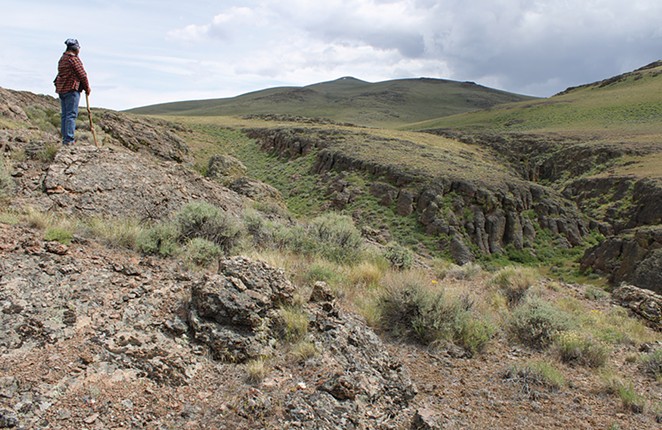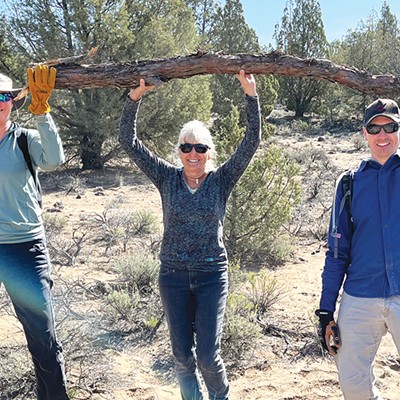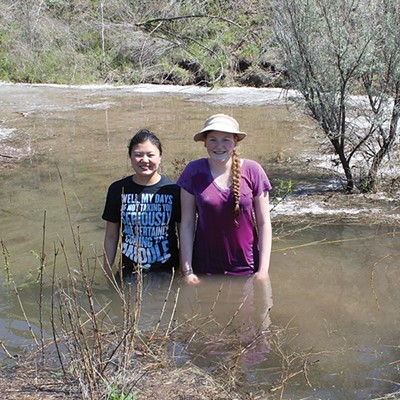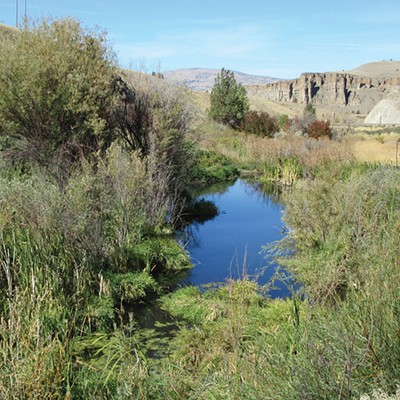Oregon's high desert is an arid landscape, defined by the scarcity of water. A mere 2% of the high desert is wetland or riparian habitat, and nearly all of the wildlife in the region depend on these oases to survive. While mighty desert rivers like the Owyhee and the John Day are critical pieces of the desert ecosystem, much of the water in the desert emerges from springs, flowing a short distance before dispersing across wet meadows rich with life. Without these humble but essential water sources, life in the desert simply could not exist.
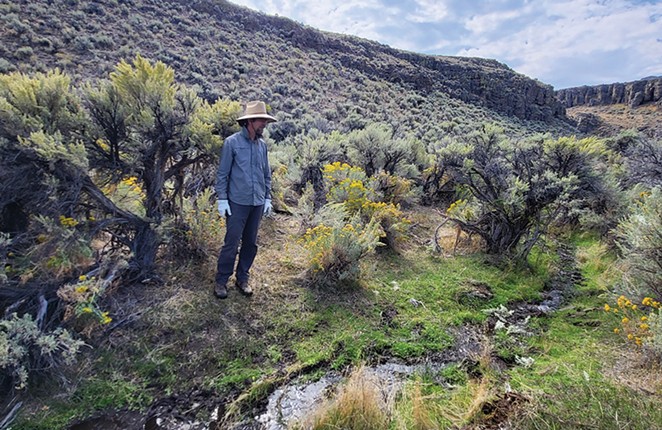
These scarce desert water sources are also important to Indigenous people across the high desert and have been since time immemorial. In 2022, I had the opportunity to accompany Wilson Wewa, a Northern Paiute elder and Traditional Ecological Knowledge holder, on a visit to Beatys Butte, which rises out of the sagebrush sea east of Lakeview, Oregon. Climbing high onto the flanks of the 7,918-foot peak, we traced the green paths of small springs and wet meadows through the expanse of sagebrush that stretched as far as we could see. Wewa observed that these springs, streams and wet areas provided paths for his ancestors to follow across the arid landscape. In this way, he says, one can see how "this whole land was inhabited."
Desert water moves in cycles throughout the year, with many small streams and seasonal water sources naturally running dry in the summer months. But these natural cycles, and the traditional lifeways of the Northern Paiute and other Indigenous people of the high desert, have been disrupted by a century of extractive overuse. As a result, the small streams and freshwater springs that were once the lifeblood of a thriving desert ecosystem have been stripped of their lush vegetation, and these waters are drying up earlier each season.
This spring, Oregon Natural Desert Association will continue working with Wewa and others at the Confederated Tribes of Warm Springs to restore these critical ribbons of life. Restoration projects are taking place at a conservation property owned by the Oregon Desert Land Trust on Beatys Butte and Pine Creek Conservation Area, a 34,331-acre preserve in the John Day Basin owned by the Tribes.
The goal of these projects is to create moister conditions throughout the year for important streamside plants to grow, ultimately improving habitat conditions for desert fish and wildlife. With the help of volunteers, ONDA will do this by hand-building small natural structures in the stream. This strategy slows water down to "aggrade"—the opposite of erode—streambanks and spread water back out across the floodplain. This is a two-step process, first consisting of removing woody vegetation, like juniper and sagebrush, that has moved into the steam corridor where it would not naturally grow and is reducing the amount of water in the stream. The second step is to use these and other natural materials to build small structures in the stream, creating natural "speed bumps."
When I asked Jefferson Jacobs, ONDA's restoration manager, if he had any specific inspiration for developing this restoration technique, he said "Yeah: Beavers." ONDA aims for our projects to mimic the benefits of beaver dams: forming wetlands that soak up water like a sponge, storing it and keeping it cool into the dry summer months. Our goal is to activate the recovery of these essential water sources, increasing their resilience to drought and climate change.
ONDA completed the first of these spring restoration projects last year, and the results were evident just weeks afterward, with sediment building up in the stream and pushing the water higher up into the surrounding area. And this successful intervention is just the beginning.
Wewa is quick to point out that his people have always practiced stewardship and conservation by observing the natural cycles of the land and not disrupting them by taking too much or overusing one place. ONDA seeks to learn from these practices by paying close attention to results and modifying our actions over time. Adding missing native plants to increase ecological diversity and restore Indigenous food sources and plant medicines where water levels can support them is one such opportunity.
Ultimately, these projects are an important reminder that nature is our best teacher when it comes to the restoration of Oregon's beautiful, and essential, desert lands and waters.
Opportunities to volunteer to participate in ONDA's spring restoration projects are open to the public and no experience is required. To learn more and sign up, visit onda.org/trips.
—Gena Goodman-Campbell is the stewardship director at Oregon Natural Desert Association, a nonprofit organization that protects and restores Oregon's high desert public lands and waters. Goodman-Campbell engages ONDA's community in hands-on restoration projects that improve desert habitat in key watersheds and migration corridors.


